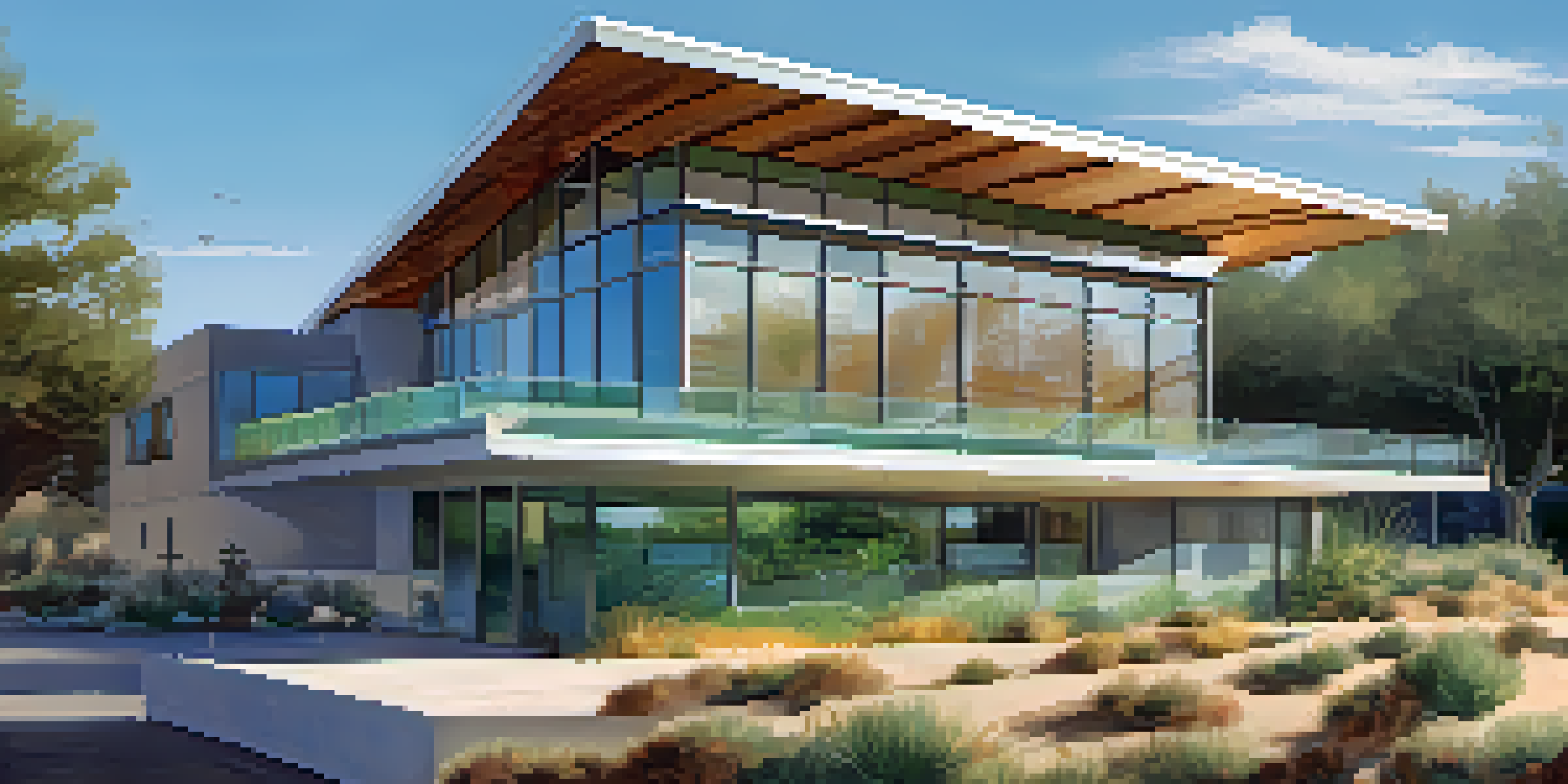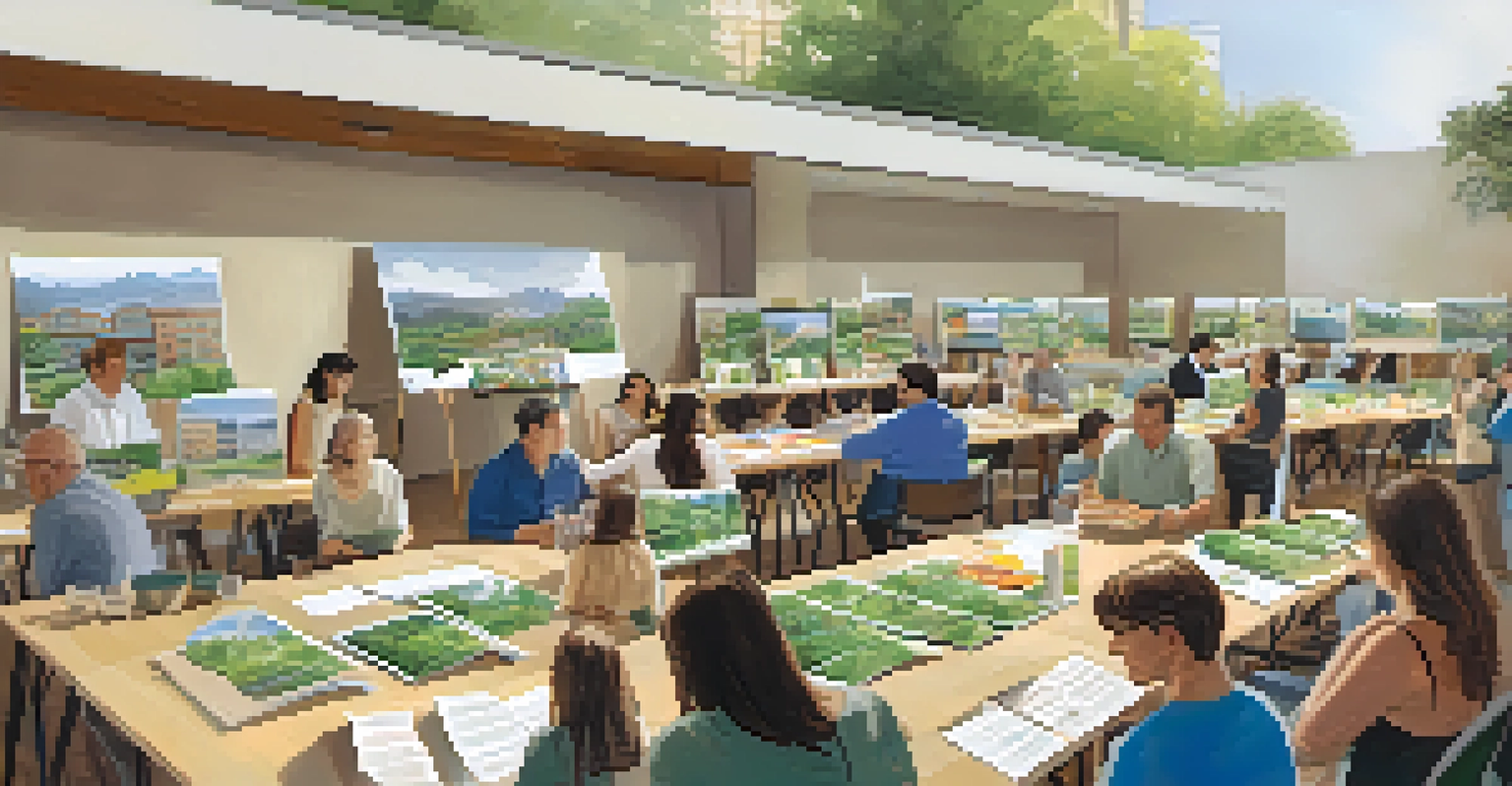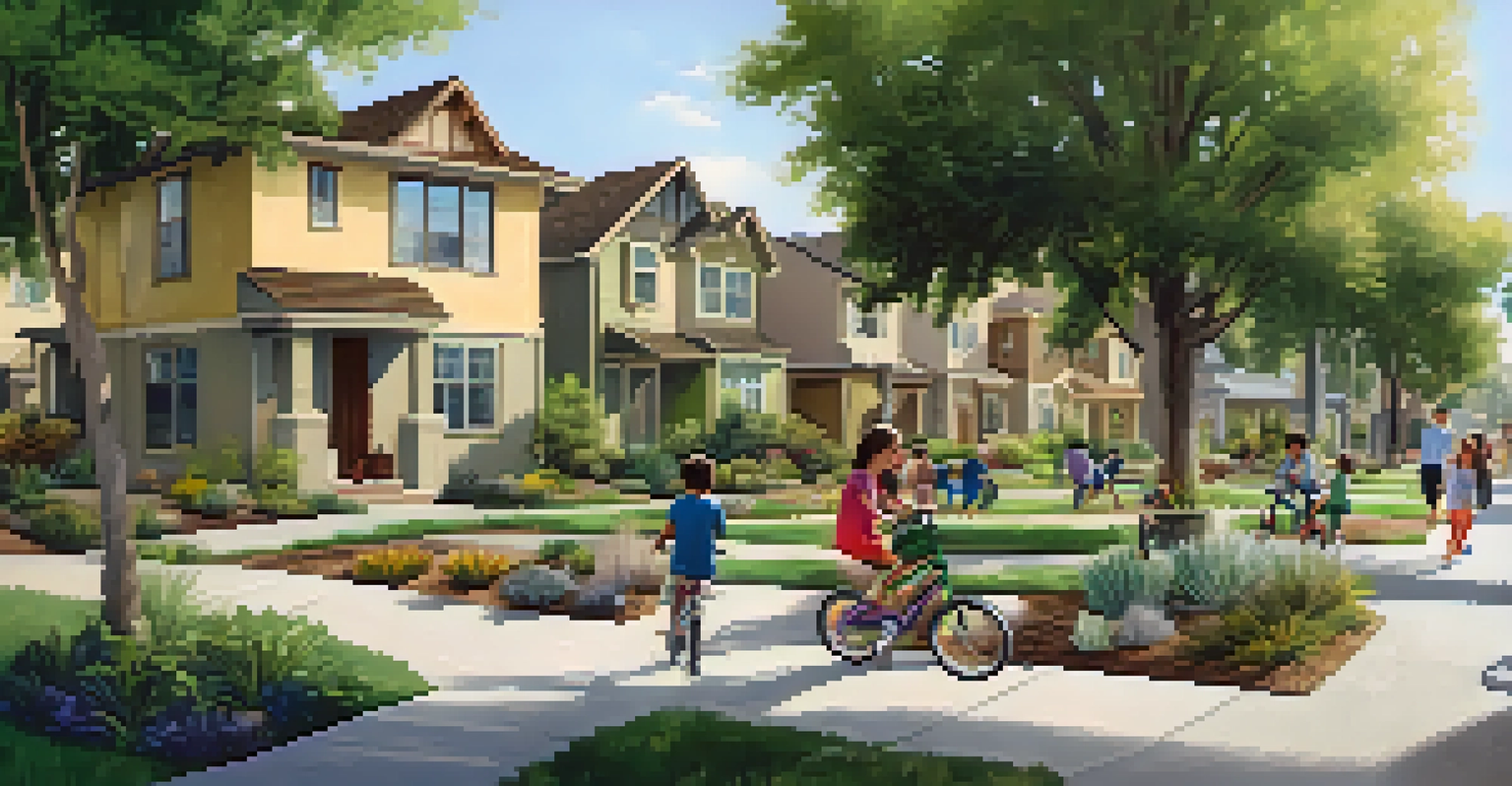Sustainable Building Practices in Pasadena: Leading by Example

Understanding Sustainable Building Practices in Pasadena
Sustainable building practices focus on creating structures that reduce environmental impact while enhancing occupant well-being. In Pasadena, this approach is more than just a trend; it's becoming a community standard. By prioritizing eco-friendly materials and energy-efficient designs, the city aims to set a benchmark for others to follow.
The greatest threat to our planet is the belief that someone else will save it.
These practices often include the use of renewable resources, improved insulation, and innovative waste management systems. For instance, many new buildings in Pasadena incorporate solar panels or green roofs, which not only lessen energy consumption but also contribute to urban biodiversity. By embracing these methods, Pasadena is paving the way for a greener future.
Moreover, sustainable building practices are not solely about the environment; they also foster a sense of community. By creating spaces that are both functional and aesthetically pleasing, Pasadena encourages its residents to engage with their surroundings. This holistic approach to building design is something that many cities can learn from.
Pasadena's Green Building Ordinance: A Game Changer
Pasadena's Green Building Ordinance is a significant step toward promoting sustainability in construction. Introduced to set guidelines for environmentally responsible design, it mandates certain standards for energy efficiency, water conservation, and materials selection. This ordinance has made it clear that sustainable building is not just optional; it’s a requirement for new developments.

The ordinance encourages developers to seek certification from recognized programs like LEED (Leadership in Energy and Environmental Design). This certification not only enhances the credibility of new projects but also attracts eco-conscious buyers and tenants. As a result, properties that adhere to these guidelines often see a higher market value and quicker sales.
Pasadena's Green Building Ordinance
The Green Building Ordinance mandates sustainable construction standards, promoting energy efficiency and water conservation.
Moreover, the ordinance reflects Pasadena's commitment to combat climate change. By establishing these standards, the city not only reduces its carbon footprint but also inspires surrounding communities to adopt similar measures. This ripple effect can lead to widespread change in building practices across the region.
Community Engagement in Sustainable Building Initiatives
Community involvement is crucial for the success of sustainable building initiatives in Pasadena. Local organizations and residents often collaborate on projects that aim to enhance environmental awareness. These partnerships not only educate the public about sustainable practices but also foster a sense of ownership in the community.
Sustainability is not just about the environment. It’s about the people and communities we serve.
Events like workshops and forums provide platforms for residents to express their concerns and ideas about sustainable development. Engaging the community in discussions about building practices ensures that diverse perspectives are considered, ultimately leading to more inclusive solutions. This participatory approach also strengthens community ties, as residents work together toward common goals.
Additionally, Pasadena has seen grassroots movements advocating for sustainability. These initiatives, often led by passionate locals, can influence city policies and inspire larger projects. When the community rallies behind sustainable building, it creates a powerful force for change that can reshape the city's future.
Innovative Renewable Energy Solutions in Pasadena
Pasadena is at the forefront of integrating renewable energy solutions into its building practices. Solar energy is one of the most popular options, with many homes and businesses installing solar panels to harness the sun’s power. This shift not only reduces reliance on fossil fuels but also lowers energy costs for residents, making it a win-win situation.
In addition to solar power, the city is exploring other renewable energy sources, such as wind and geothermal energy. By diversifying its energy portfolio, Pasadena aims to create a more resilient and sustainable energy system. These innovative solutions are essential in addressing the challenges posed by climate change and ensuring a stable energy future.
Community Involvement Fuels Change
Active community engagement in sustainable initiatives ensures diverse perspectives are considered and fosters a sense of ownership.
Moreover, the city offers incentives for residents and businesses to adopt renewable energy technologies. These incentives can include tax breaks, rebates, or grants, making it easier for individuals to invest in sustainable practices. When the community sees tangible benefits, it fosters a culture of sustainability that can lead to widespread adoption.
The Role of Sustainable Materials in Construction
Using sustainable materials is a cornerstone of eco-friendly building practices in Pasadena. These materials, which can include recycled content, sustainably sourced wood, and low-VOC (volatile organic compounds) paints, help reduce the environmental impact of construction. By choosing wisely, builders can create healthier living spaces for occupants while also minimizing waste.
Pasadena has taken steps to promote the use of sustainable materials through educational programs and building codes. By informing builders and architects about the benefits of these materials, the city encourages more responsible choices in construction. This shift not only benefits the environment but also enhances the quality of life for residents.
Additionally, many local suppliers are now focusing on providing eco-friendly options, making it easier for builders to source sustainable materials. This growing market reflects a broader trend toward sustainability in the construction industry. As more builders embrace these materials, they contribute to a healthier, more sustainable Pasadena.
Water Conservation Efforts in Sustainable Building
Water conservation is an essential aspect of sustainable building practices in Pasadena, especially in light of California's ongoing drought issues. Many new developments are now equipped with water-efficient fixtures, such as low-flow toilets and faucets, which significantly reduce water usage. These measures not only help preserve this vital resource but also lower utility bills for residents.
Additionally, rainwater harvesting systems are becoming increasingly common in Pasadena. By capturing and reusing rainwater for irrigation and non-potable uses, these systems further reduce the demand on the municipal water supply. This innovative approach to water management exemplifies how sustainability can be integrated into everyday building practices.
Innovative Renewable Energy Adoption
Pasadena is integrating various renewable energy solutions, including solar and wind, to create a more sustainable energy system.
The city also promotes xeriscaping, a landscaping technique that uses drought-resistant plants to minimize water usage. By encouraging homeowners to adopt this practice, Pasadena fosters a culture of conservation that extends beyond just building. This comprehensive approach to water management is crucial for ensuring a sustainable future for the community.
Future Trends in Pasadena's Sustainable Building Movement
As Pasadena continues to lead by example in sustainable building practices, several trends are emerging that could shape the future. One notable trend is the increasing integration of smart technology in buildings. Smart systems can optimize energy use, monitor water consumption, and enhance overall efficiency, making buildings not only more sustainable but also more convenient for occupants.
Another trend is the focus on community-oriented developments that prioritize green spaces and public amenities. These projects emphasize the importance of creating livable environments where residents can connect with nature and each other. By prioritizing these aspects, Pasadena is setting a standard for future developments that prioritize both sustainability and quality of life.

Lastly, as awareness of climate change grows, there is likely to be a shift toward more stringent building codes and regulations. Pasadena may lead the way in implementing these policies, pushing for even higher standards in sustainable construction. This proactive approach ensures that the city remains at the forefront of the sustainable building movement.